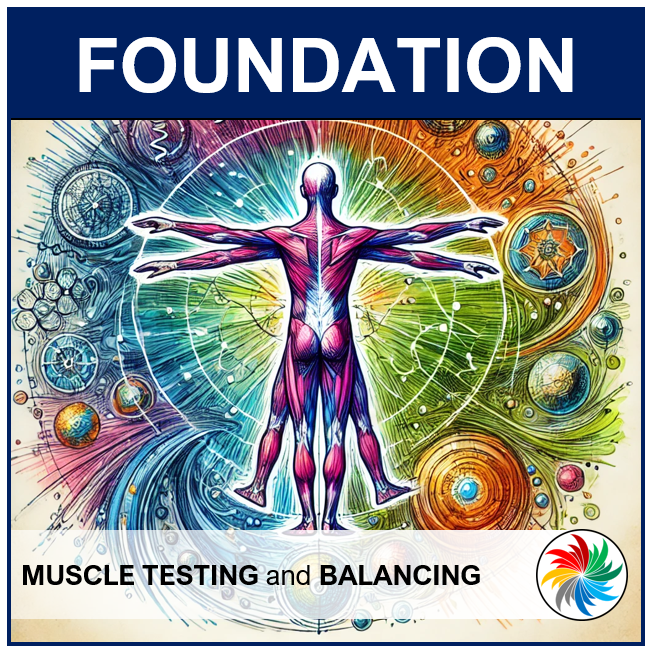
Level 3 advances the concepts and techniques from Levels 1 and 2. It focuses on Reactive Muscle Theory and deeper emotional stress release methods. The course also covers advanced balancing strategies using Five Elements. This course integrates additional muscles, circuit-retaining modes, and techniques for chronic pain relief and past trauma balancing.
At the end of Level 3 you will be able to:
- Balance a further 14 muscles using extra balancing methods including colour and food.
- Use circuit retaining mode to facilitate easier energy corrections.
- Gain benefits from balancing the muscles used in walking.
- Defuse past trauma using E.S.R.
- Relieve pain and tension using the principles of reactive muscles.
- Relieve chronic pain.
Core Concepts:
Reactive Muscle Theory: Identifies relationships between overactive “reactor” muscles and underactive “reactive” muscles. Employs balancing techniques to correct imbalances and enhance coordination.
Five Element Techniques: Includes balancing with colors and emotions to address deeper energy imbalances. Uses Five Element theory for food testing and specific meridian corrections.
Circuit Retaining Mode: Keeps information “in circuit” during testing and corrections for more precise balancing.
Advanced Gait Testing: Assesses walking patterns and their influence on energy flow and muscle coordination.
Emotional Stress Release (ESR) for Past Trauma: Focuses on defusing emotional stress linked to past events, enabling better emotional and physical balance.
Key Techniques and Applications:
Five Element Balancing: Incorporates colors, emotions, and food to balance meridian energy. Enhances emotional stability by addressing the stressors linked to specific meridians.
Reactive Muscle Balancing: Corrects patterns of overcompensation and underuse between muscle groups, improving posture and reducing discomfort.
Sedation Techniques: Focus on reducing overactive energy in meridians or muscles using specialized acupressure points.
Pain Tapping: A method to manage chronic pain by activating and balancing involved meridians.
Pulse Testing: Adapts Chinese pulse diagnosis for kinesiology, identifying over-energized meridians and rebalancing energy flows.
Gait Integration: Tests and corrects walking mechanics to improve body coordination and energy distribution.
Muscles and Associated Meridians:
Level 3 includes additional muscles beyond the foundational ones from Levels 1 and 2. These muscles correspond to meridians and provide further depth to balancing techniques. Examples include:
- Stomach: Levator Scapulae, Posterior Neck Extensors
- Spleen: Opponens Pollicis, Triceps
- Triple Warmer: Gracilis, Soleus, Gastrocnemius
- Liver: Rhomboids
- Lung: Diaphragm, Coracobrachialis
Advanced Tools:
Spindle Cell and Golgi Tendon Techniques: Enhance muscle response through targeted proprioceptive stimulation.
Acupressure Holding Points: Used for tonifying or sedating energy, depending on muscle and meridian needs.
Nutrition and Meridian Links: Focus on foods that support specific meridian functions, tailored to individual needs.
Chronic Pain Support: Balancing and relief techniques for ongoing discomfort or limited mobility.
Practical Applications:
Goal Setting with Emotional Balancing: Integrates emotions into goal-oriented balancing to resolve hidden stress factors.
Postural and Movement Improvement: Refines posture and movement patterns for enhanced physical and energetic alignment.
Stress Reduction: Advanced ESR methods for emotional trauma resolution and future performance stress.
Training and Assessment:
Level 3 is a 15-hour course combining theoretical learning, hands-on practice, and proficiency evaluation. Students are encouraged to integrate their knowledge with practical applications for holistic well-being.
